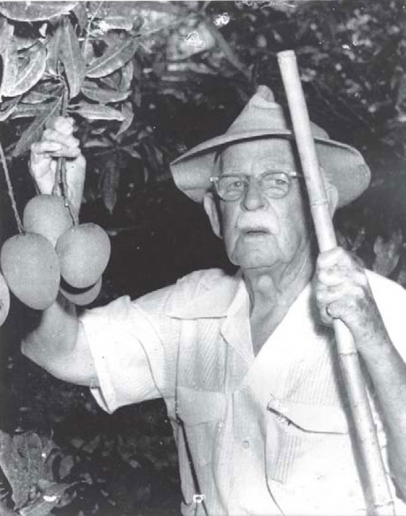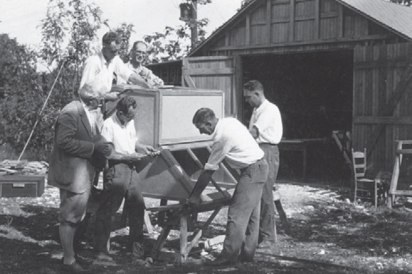The Inherent Dilemma of a Diverse Bounty
Before David Fairchild, we had coontie flour, Seminole pumpkins, pond apples and native persimmons. Today, we are blessed with amazing horticultural diversity - and unwanted pests.
David Fairchild was the consummate plant explorer and promoter of exotic edible crops from the late 1800s through the first half of the 1900s. The founder of the Seed and Plant Introduction Division of the United States Department of Agriculture, Dr. Fairchild had an incurable wanderlust and love of an edible crop culture. Day and night, he mused on fruit, culture and edible plants, giving life to a bold plan of plant collection, research and distribution. His approach was one of inquisitive innocence, built upon a solid scientific base and a dogged tenacity. Perhaps no one before or after possessed such a unique skill set, and luckily for us, his actions met with unparalleled success, making the United States into the great agricultural power that we are today. He also was a South Floridian for much of his adult life, transforming our edible world in ways never before conceived.
FEARLESS ADVENTURERS
Fairchild and his band of brilliant, audacious plant collectors traversed the globe to bring back the edible plants that we now take for granted. These fearless early plant adventurers introduced everything from staple crops to luxury exotics and ornamentals. They brought them back, grew them and put these raw materials into the hands of skilled plant breeders, who molded them into the modern crop juggernauts of today.
So complete was their success that today we struggle to remember the way it was. Here in South Florida, before David Fairchild, we had coontie flour, Seminole pumpkins, pond apples and native persimmons. We romanticize the subsistence agriculture of the past, the genetic stagnation and remoteness of the village life. We talk of the noble nature of Native American and peasant farmers from our position of wealth and comfort. Yet, we forget about the starvation and desperation that came along with this past life.
In our South Florida edible world, we are blessed by an amazing horticultural diversity. We are genetically rich beyond our wildest dreams compared to times past. We have a world of mangos, lychees and mamey sapote; we can plant vegetables from every corner of the globe. We can choose an organic path of growing to keep our fruit alive and healthy, thanks to our amazing genetic diversity.
Our grocery store shelves are stocked with every conceivable fruit and vegetable from near and far. It boggles the horticultural mind to think of the diversity available to us today. And with this comes a cost of unwanted pests and potential threats to the very diversity that we now take for granted.
READY FOR THREATS
Currently, we are battling an infestation of the Oriental fruit fly in Miami-Dade County. Introduced to South Florida most likely through the movement of infested fruit, this pest threatens our tropical fruit paradise, for this fruit fly has wide tastes and a destructive nature. We build into our agriculture many rules and protections against pests such as the Oriental fruit fly, but in the interconnected world in which we live, mishap is inevitable. Even though the Oriental fruit fly is officially a disaster, it is also a testament to our early warning systems in place to protect agriculture. Painful as it may be, we all have a responsibility to protect our diversity and way of life. This will not be the last pest to visit our shores – far from it. We must stand ready and vigilant.
I am a native Floridian, a fisherman, native plant lover and tropical fruit and vegetable grower. Ancient edible gardening techniques and locations are fascinating to me and my edible world involves both the old and the new. I marvel in the simplicity and the elegance found in both systems. It is this very elegance and simplicity that I put into my edible gardening here in South Florida – painted upon a canvas of diversity that ancient peoples could only dream about.







